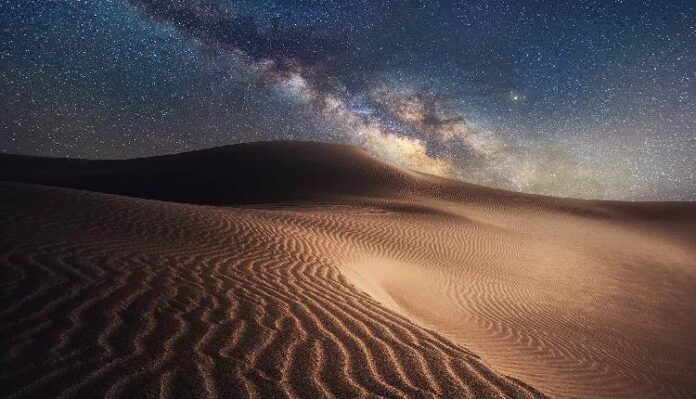When you picture deserts, you probably picture long stretches of sand that extend beyond what your sight can see. However, they also guarantee exciting vacations with camel rides, breathtaking scenery, incredible stargazing, and enchanted sunrises and sunsets.
A trip to the desert is a fantastic way to get away from your routine and the chilly winters and enjoy some sun, and sand, as well as fun. Here are a few of the best desert places on the planet. We have included all around the world deserts as well as places in India. Add the following best desert places to travel in your bucket list.
Best desert places to travel:
Gobi, China and Mongolia
Mongolia and northern China are both covered by the enormous Gobi Desert. It has mountains, a forest that is always green, and the Khongoryn Els, a stunning system of dunes. Due to the distinctive singing sound created when the wind moves the sand, the dunes are also referred to as the Duut Mankhan or “Singing Dunes.” Tourists can explore the Flaming Cliffs, a well-known dinosaur fossil bed, which is located in the centre of the Gobi. If you’re thinking of visiting this one, keep in mind that the majority of Ulan Bator’s hostels and guesthouses cater to tourists and can set up a variety of Gobi tours, but it’s necessary to do your homework on the tour companies first.
Bikaner, Thar Desert, India
Bikaner, also known as the “Camel City,” provides a magnificent perspective of India’s sand deserts. It is located 330 kilometres from Jaipur amidst the Thar desert’s meandering sandhills. Rao Bikaji, a Rathore King who founded this city in 1488, is the origin of the name Bikaner. The city is well-known for its majestic red sandstone forts, breathtaking desert vistas, and memorable camel safari adventures. Many of the city’s palaces, including Laxmi Niwas Palace, are now historic hotels that give visitors a taste of a royal stay. The camel safari is a significant highlight of the trip to Bikaner. To ensure that you don’t miss Bikaner’s vibrant desert sunset, it should ideally be done in the evening.
Dallol Desert, Ethiopia
It takes courage to travel through Ethiopia’s Dallol Desert. A surreal landscape can be found in the hottest inhabited region of our planet. Geysers, iron-oxide crusts, and intense volcanic activity in this area have resulted in salt deposits that have formed the landscape. You’ll have the impression that you’re watching some enigmatic NASA video on television. Additionally, there are salt lakes and sulphur springs in this area. There aren’t many tour operators in this area that provide trips. We strongly advise that you make the journey in groups and prepare yourself for a challenging environment.
Jaisalmer, Thar Desert, India
A city proudly displaying its golden façade can be situated in the centre of the Thar Desert, about 575 kilometres from Jaipur. Yellow sandstone is used to build the majority of the city’s structures, including palaces, temples, and homes. Golden sand that sparkles are so abundant that it even covers the surrounding desert. As a result, this mediaeval city has acquired the moniker “Golden City”. The opportunity to explore the desert’s captivating beauty is provided by spending the night in the dunes. In the middle of the night, you can have a bonfire while gazing at the starry sky and taking in a gorgeous sunset.
Namib Desert, Namibia
The Namib Desert, which expands for more than 1200 miles, is regarded as the oldest on the planet and dates back upwards of 55 million years. It is located in Namibia, South Africa, as well as Angola along the African continent’s Atlantic coast. This desert offers an exciting set of activities, including sandboarding as well as hot air balloon rides, making it the ideal place to visit for adventure seekers. You will be in awe of the magnificent Sossusvlei dunes, the second largest in the world when you see the entire landscape. Here you can see astounding wildlife like hyenas, ostriches, black rhinos, as well as desert elephants.
White Sands National Monument, USA
The gypsum sand that covers this region’s 275 square miles gives the White Sands National Park its name-bearing colour. It is the world’s biggest gypsum dune field, and the sand is refreshing to the touch. The drying up of a former sea is what gave rise to the dunes. It flourished as a result of the area’s lower rainfall; the gypsum accumulates here because there is no way for the moisture to exit the basin. On such dunes, you can try activities like sandboarding, hiking, as well as skating.


